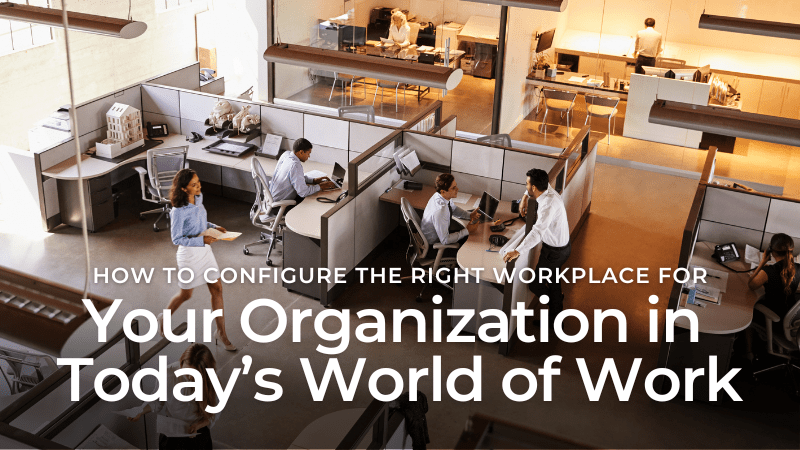
How to Configure the Right Workplace for Your Organization in Today’s World of Work
With so much crosstalk and conflicting views surrounding return-to-office mandates, employers must tread carefully. It’s no secret that many employees have grown accustomed to their newfound remote work lifestyle thanks to the greater flexibility, better life-work balance, and improved wellbeing that it affords them.
Slack’s Future Forum research revealed that as many as 76% of workers don’t want to return to the office full time, and 57% say that their company culture has improved as a result of flexible work policies. Meanwhile, a two-year Stanford study showed that remote workers are more productive, engaged, and 50% less likely to quit. With a heightened emphasis on employee attraction and retention in today’s tight labor market, those stats simply can’t be ignored.
However, employers have other, often conflicting concerns. Aside from the high-cost and permanence of long-term office leases, many business leaders worry about the lack of connection and collaboration that remote work presents. There’s a brewing employer-employee disconnect, and there is little room for error if organizations want to succeed in this volatile environment.
Aside from the heated debates and high-profile stumbles in our return-to-work world, there are solutions that can meet these transformative workplace demands. But it requires a change of the outmoded five-days-in-one-place mindset.
Mandate vs. Magnet
Collectively, we’ve arrived at the conclusion that corporate America is forever changed. What attracts people to a workplace isn’t the same as it was pre-pandemic. Free lunches, pool tables, and mandated happy hours have been replaced by a stress-free commute, better childcare options, and even lessened impact on the environment.
However, fully remote workers also report higher rates of isolation, fueling the country’s loneliness epidemic that already existed and the pandemic exacerbated.
Couple this with the desire of employers to bring its workforce together more consistently, and the solution seems to point to hybrid work arrangements versus fully remote situations. In fact, a Gallup poll showed that the majority of workers prefer hybrid work with access to a physical work location over working remotely 100% of the time.
With that in mind, how can employers configure workplaces that meet their demands (more face time, better opportunities for social interaction with managers and mentors) as well as their employees’ desires (more flexibility, enhanced health and wellness)? What elements does the new workplace need to have to attract workers back into a physical space rather than working from home full time?
Consider Your Full Range of Options
As the appeal of a full-time office wanes, enterprise companies need to reinvent themselves. Each organization is different, and leaders need to customize their workplaces to fit their business needs and goals. Developing a framework based on such considerations as your current company size, growth projections, demographics, and more individual factors can help you determine what works best for the ongoing health and success of the organization.
Hybrid work arrangements that incorporate flexible workplaces (such as coworking environments with multiple locations and adaptable leases) offer many benefits that are important to both employers and employees: collaborative creativity as well as individual productivity, ease of team alignment and coordination, higher employee engagement, and the ability to scale your space up or down depending on evolving business needs.
Take a close look at how your workers contribute best: Are there times needed for efficient, heads-down execution? Do you need to bring people together on a regular basis to innovate, problem solve, and share insights and information? Chances are your organization can benefit from having access to environments that support all of the ways we work today.
How Flex Spaces Meet Employers and Employees Where They Are Now
Rethinking business priorities includes reassessing commercial real estate strategies in light of the current economic and employment outlook. JLL has found that 56% of corporate executives view the implementation of hybrid work policies that support agility and flexibility a top priority.
With one master contract and hundreds of carefully curated coworking partners around the world, Preferred Office Network can support the shifting needs of your company and your employees. We’re committed to providing our clients with a variety of ways to work — from private offices and coworking spaces to day offices, hot desks, and virtual offices — that define how your employees want to work now.
